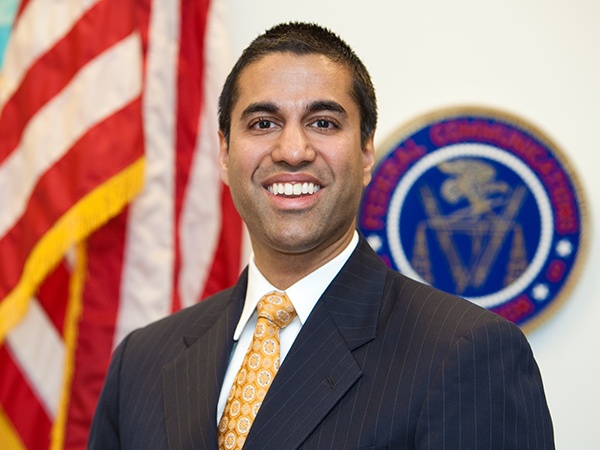
The Federal Communications Commission (FCC) on Thursday took action to promote telehealth in rural America through reforms to the Rural Health Care Program that ensure limited program funds are disbursed efficiently and equitably, promote transparency and predictability in the program’s administration, and strengthen safeguards against waste, fraud, and abuse.
The announcement revises the rules governing the Telecom Program to simplify calculation of the urban rate—the amount health care providers pay—and the rural rate—the amount that service providers receive.
Here are five things to know about the Report and Order:
1. Target funding to rural areas in the most need of health care services and ensure that, when demand exceeds available funding, eligible rural health care providers continue to benefit from RHC Program funding by prioritizing support based on rurality and whether the area is medically underserved.
2. Reform competitive bidding in the RHC Program to make it a more productive mechanism for health care providers to identify and select cost-effective service offerings available to them in rural areas
3. Adopt a series of Program-wide rules and procedures to simplify the application process for program participants and provide more clarity regarding the RHC Program procedures.
4. Provides for the Program’s $150 million cap on multi-year and upfront payment requests to be adjusted annually for inflation.
5. The Report and Order includes several measures to ease the burden on applicants while establishing consistency between the RHC Programs, including providing additional time for the competitive bidding process, establishing a more efficient application filing window and creating mechanisms for USAC to address deadline extension requests for invoicing and service delivery.
FCC Chairman Ajit Pai released the following formal statement on the FCC’s telehealth action:
“In my time here, I’ve been known to mention the fact that I was raised in rural Kansas. But my father’s story is more relevant here than any other anecdote I could share. When I was growing up, my dad was one of the only urologists for miles around and made countless trips throughout southeast Kansas to make sure patients in communities without specialists like him could see one when they needed one. However, in recent years it has become harder for small towns to recruit and retain specialists. And to add to the problem, many rural hospitals are struggling just to keep the doors open.
So it’s hard to overstate the value that telemedicine can add to our health care system. These transformative technologies are helping to bring advanced health care to rural areas across the country. Whether it’s transmitting electronic medical records, real-time medical imaging, videoconferencing with remote doctors, or enabling specialists to remotely monitor patients in rural hospitals and clinics, connectivity between patients and health care providers is essential to the one in five Americans who live in rural areas. Indeed, to give just one recent example of what is possible, primary care doctors now can use a connected retinal camera during office visits to catch diabetic retinopathy, the leading cause of blindness among people with diabetes, with the help of a remote ophthalmologist.
I’ve had the privilege of seeing telemedicine’s potential in many parts of the country. I’ve visited the Cleveland Clinic in Ohio and Ochsner Health System in Louisiana; Christiana Care in Delaware and the Children’s Hospital of Philadelphia; the Packard Children’s Hospital in California and the University of Kansas Medical Center; St. Mary’s Medical Center in Colorado and the Moab Regional Hospital in Utah. And I’ve been to many Veterans Affairs facilities, like the Lecanto Community Based Outpatient Clinic in Lecanto, Florida; the National Tele-Mental Health Hub in Salt Lake City, Utah; the Tele-Seizure Program in Providence, Rhode Island; and the VA Medical Center in Boise, Idaho. Every one of these visits inspires me and underscores the importance of making these success stories the norm around the country. The FCC’s Rural Health Care Program is our primary way to do that.
In recent years, program demand has begun surpassing available funding. So in December 2017, I proposed and the Commission began this rulemaking to increase the annual funding cap and promote greater efficiency and cost-effectiveness in the program.
Last year, and for the first time in the agency’s history, the FCC increased the funding cap—by more than 40%. This was a necessary change, but not a sufficient one to guarantee the program’s long-term health. We also need to do more to root out waste, fraud, and abuse in the program, for every dollar misspent is a dollar not devoted to telemedicine and the patients who need it.
So today, we are taking steps to ensure that every dollar in the program is being spent efficiently. These measures will promote transparency, accountability, and predictability in the Rural Health Care Program. This Order will replace guesswork with certainty for rural health care providers. They will have greater insight into the amount of support available for requested services. They will receive funding decisions more quickly so that they can focus on delivering cutting-edge health care to their patients. And these reforms will also reduce waste by ending communications service providers’ ability to manipulate the calculation of rates for their own benefit.
For this last reason, I understand that some service providers are unhappy about some of the steps taken in this Order. But the purpose of this program isn’t to pad their bottom line; it’s to make it easier and cheaper for health care providers to treat their patients. This is the Rural Health Care Program, and this FCC is going to continue to do what is necessary and appropriate to ensure that connectivity helps make Americans healthier and communities stronger.
